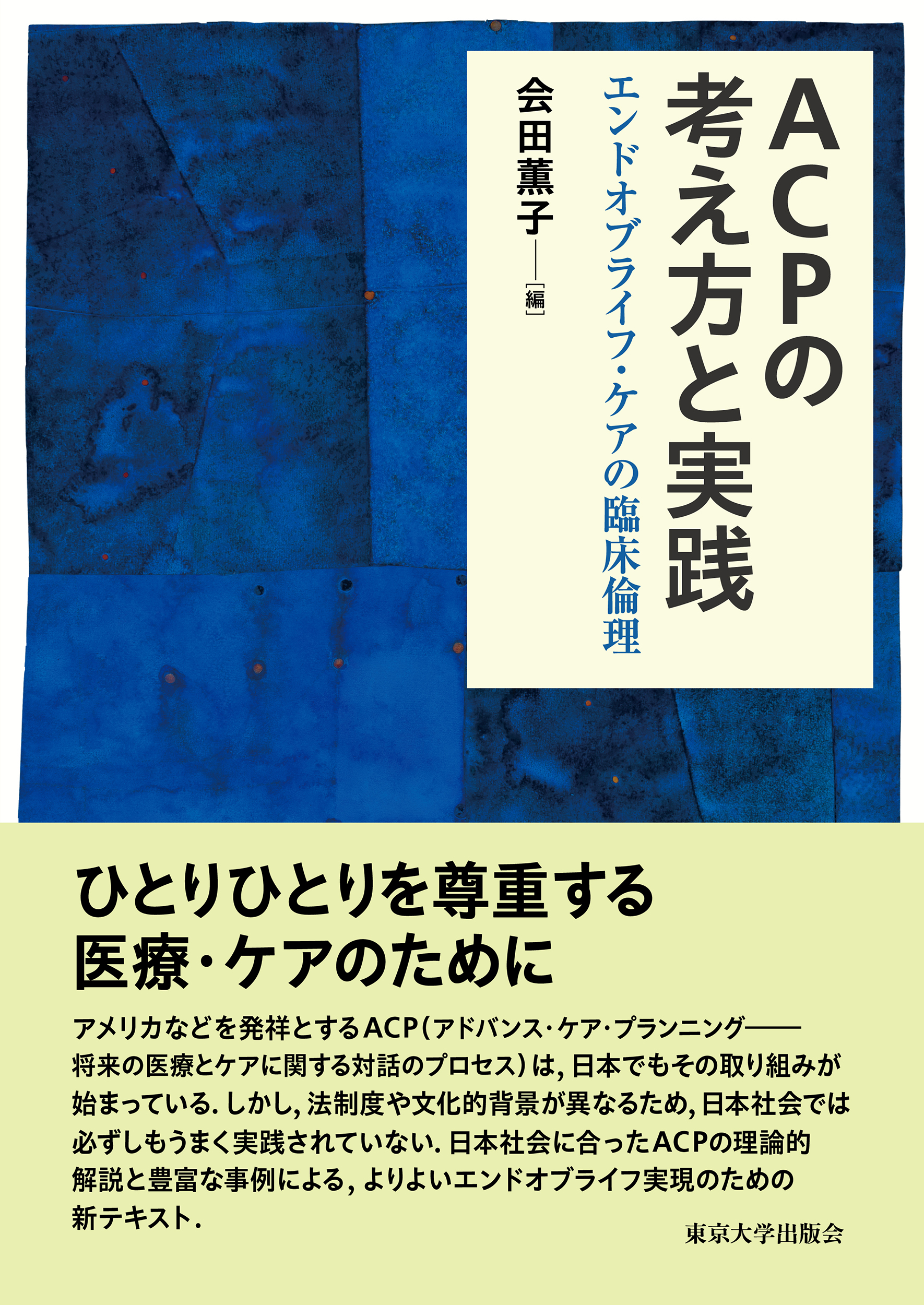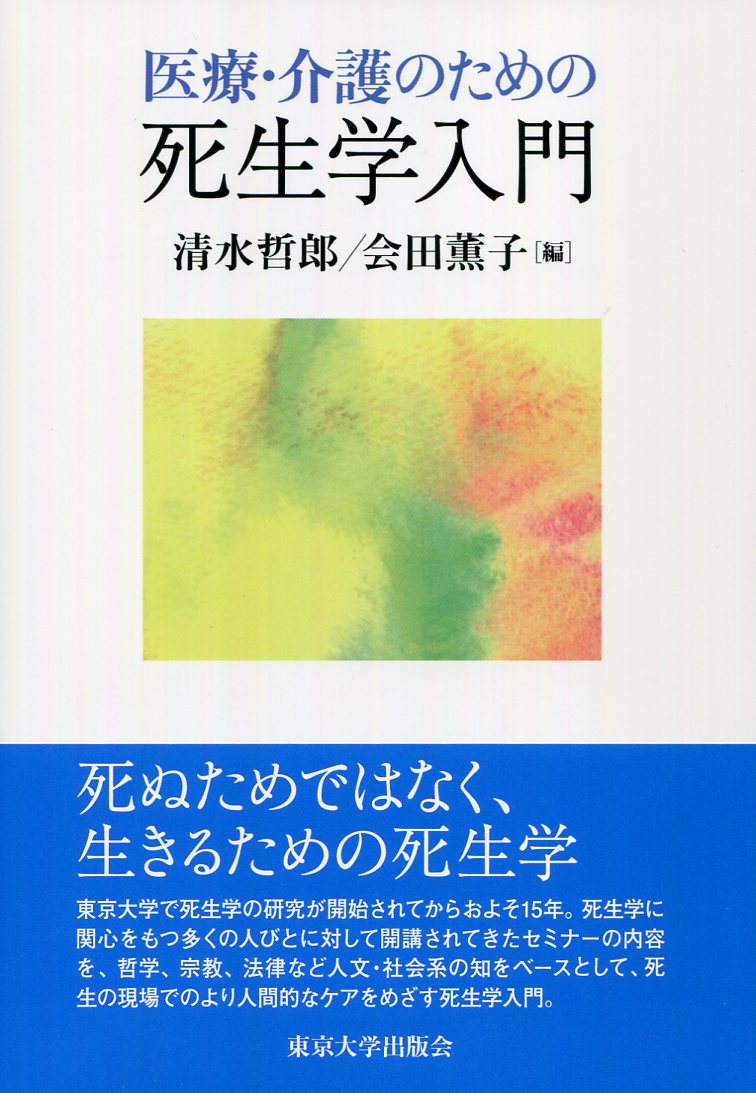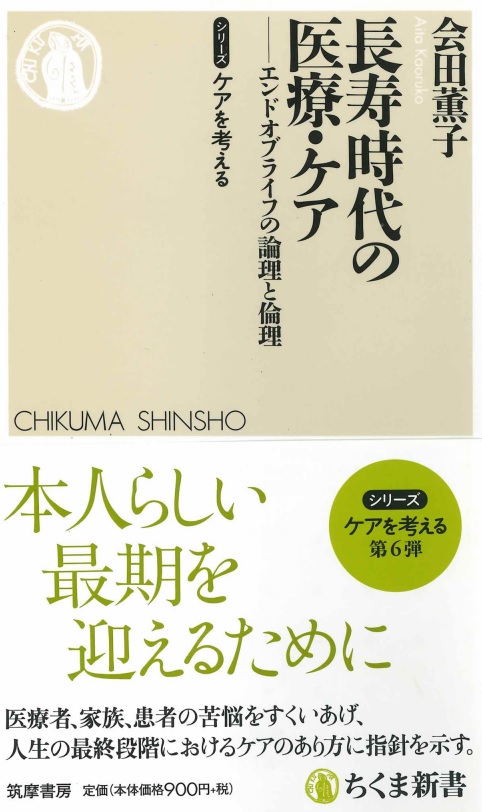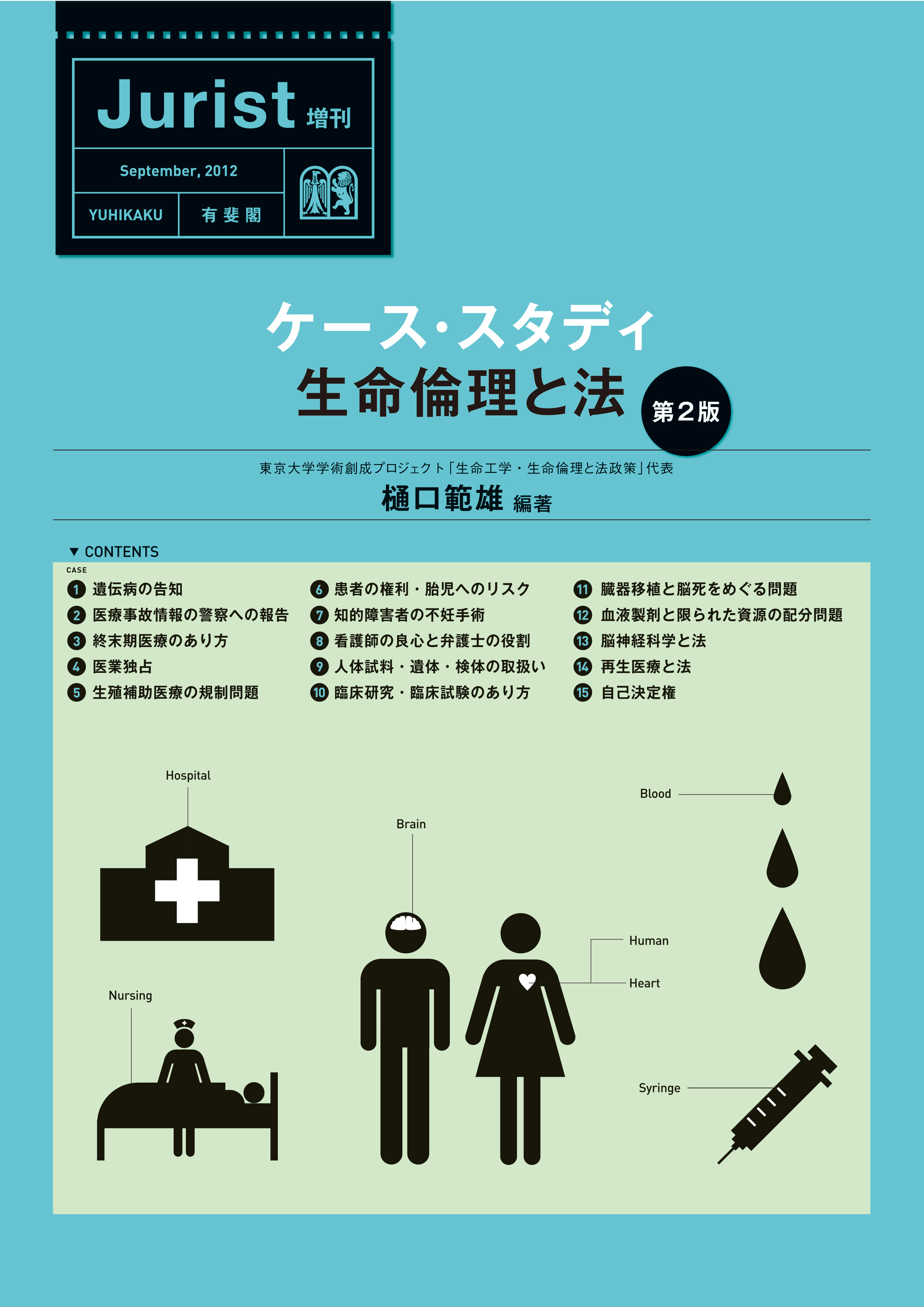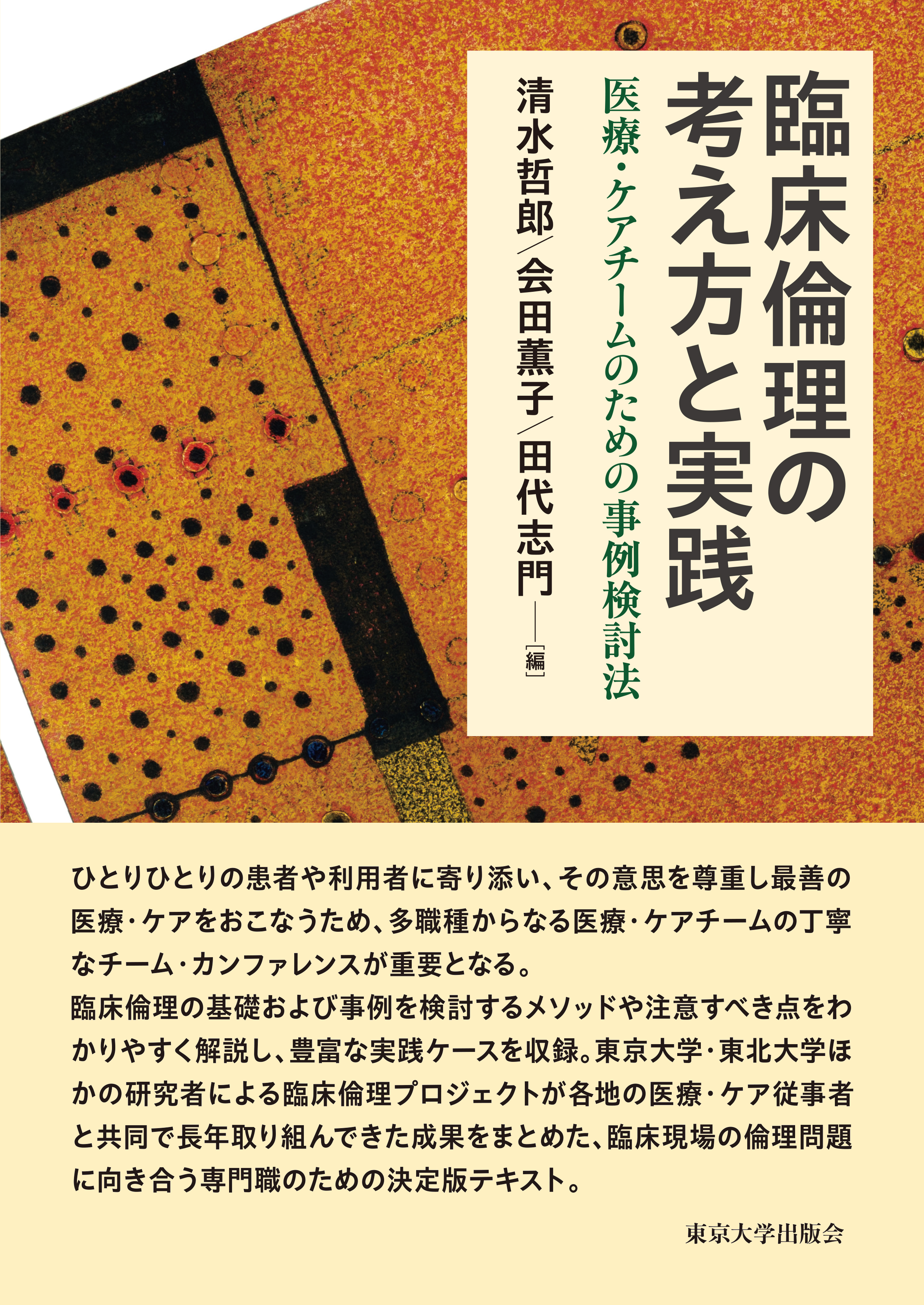
Title
Rinsho Rinri no Kangae-kata to Jissen (Theory and Practice of Clinical Ethics - Conference Methods for Medical Treatment and Care Teams)
Size
180 pages, B5 format
Language
Japanese
Released
February 10, 2022
ISBN
978-4-13-062423-7
Published by
University of Tokyo Press
Book Info
See Book Availability at Library
Japanese Page
Clinical ethics address various ethical issues that individual patients/users (hereinafter referred to as "person himself/herself") face regarding the field of medical treatment and/or long-term care. Such issues include, but are not limited to, those related to the selection of treatment methods, care, and places of medical treatment. Information is organized and analyzed to determine which method should be selected among multiple options. The person himself/herself and their family communicate continually with the medical treatment and care team to reach a consensus on the best practical option for the person himself/herself. The main role of clinical ethics lies in decision-making support for the purpose of realizing the best outcomes for both the person himself/herself and their family. This volume concerns those who are practicing medical treatment and care and explains the theory of clinical ethics and conference methods developed in Japan, which is accompanied by numerous case examples.
Along with advances in medical technology, and more options available for treatment as a result, we live in an era in which the awareness of diversity is also being raised. Clinical ethics is a relatively new field of study that has been birthed in response to the needs of such times and which seeks to establish the selection of a medically appropriate option that respects the will of the person himself/herself as much as possible by reflecting their values, outlook on life, and view of life and death.
Traditionally, Japanese studies of applied ethics related to medicine and medical treatment – such as medical, nursing, and bioethics – have tended to rely primarily on translated learnings from Europe and America. However, this volume presents the results of a clinical ethics project that Japanese researchers of philosophy, ethics, and sociology have been working on for many years in collaboration with those engaged in medical treatment and care. As such, it can be said that this volume is the first full-scale text on systematic clinical ethics that is unique to Japan.
The fact that this methodology was developed in Japan is particularly important for clinical ethics, as decision-making support in clinical practice requires the consideration of the social and cultural characteristics of the relevant society as well as its laws and regulations. Among the social and cultural characteristics, there are significant differences between the United States, Europe, and Japan regarding the role of the family in decision-making processes regarding medical treatment. Of note is that, in Japan, consideration for the family is often among the main points of concern.
There are also differences in the fundamental laws and systems of different countries. For example, regarding the choice of medical treatment and care at the end-of-life, in North America and Australia, advance directives such as living wills, which originated in the United States, are regarded as important legal documents, while in Japan, many citizens and medical professionals are reluctant to legislate such directives, and discussions rather than documents are regarded as important. Moreover, the presence or absence of a surrogate decision-maker system – in cases in which the person himself/herself may have difficulty communicating – also causes differences in decision-making support. For example, Japan does not have such a system in place, and here too, discussions among the parties concerned are emphasized instead.
In modern times, multidisciplinary personnel, including doctors and nurses, are required to respond to issues of clinical ethics as medical treatment and care teams. The team then conducts case studies (or “conferences”) as part of their decision-making support process. In the method using the "Conference Worksheet" developed by the authors, et al, discussions start with the teams examining the “optimal and standard choice from the viewpoint of the current medicine” for the biological conditions of person himself/herself, then examining the “optimal selection for the life of the person,” based on examining the "intention (wishes and preferences) of the person himself/herself," "the family's intention and feelings," "points to note from social considerations," and "points that prevent agreement" at the juncture of selection. After debating the "necessary considerations for the family" to make the “optimal selection for the life of the person himself/herself,” the "policy for future measures" is then compiled. In this way, this method allows the exploration of the optimal selection for each individual regarding his/her unique lifestyle as well as lives while considering various constraints and environmental factors. The “Conference Worksheet” is freely downloadable from the following site, along with additional e-learning content on the given methodology.
Conference Worksheet: http://clinicalethics.ne.jp/cleth-prj/worksheet/
e-Learning Content: http://clinicalethics.ne.jp/cleth-prj/cleth_online/
(Written by AITA Kaoruko, Project Professor, Graduate School of Humanities and Sociology / 2022)
Related Info
https://www.l.u-tokyo.ac.jp/dls/



 Find a book
Find a book


 eBook
eBook